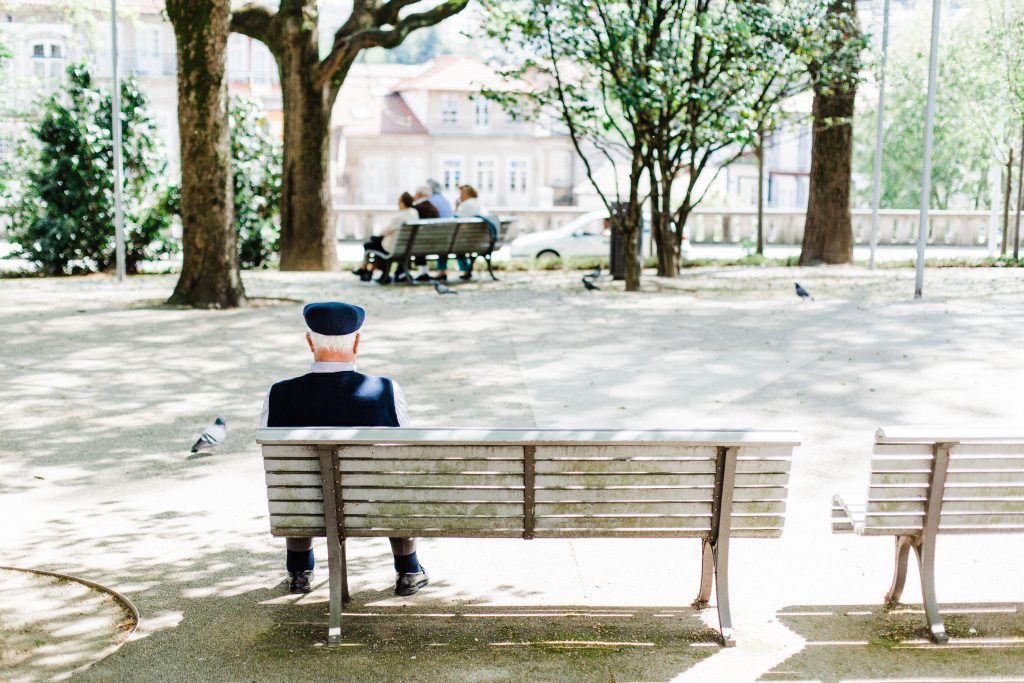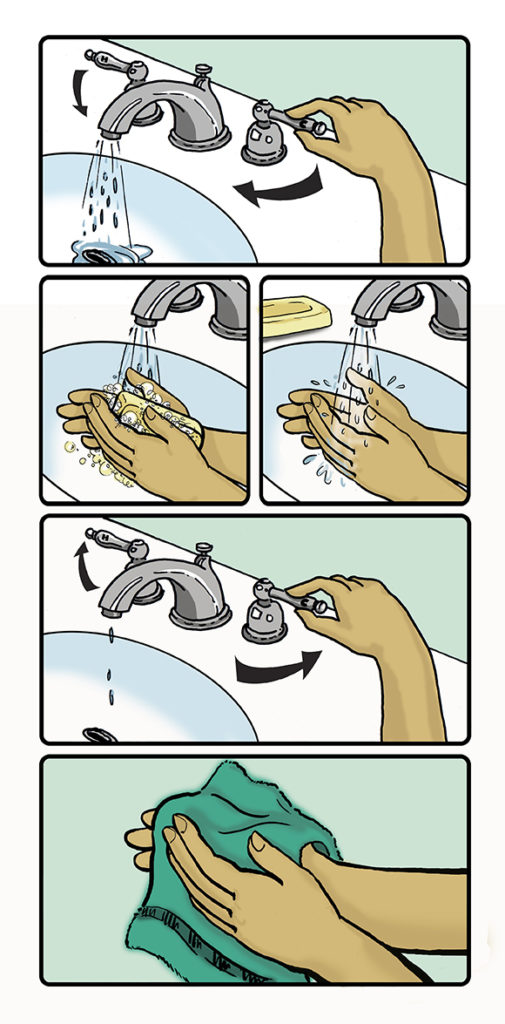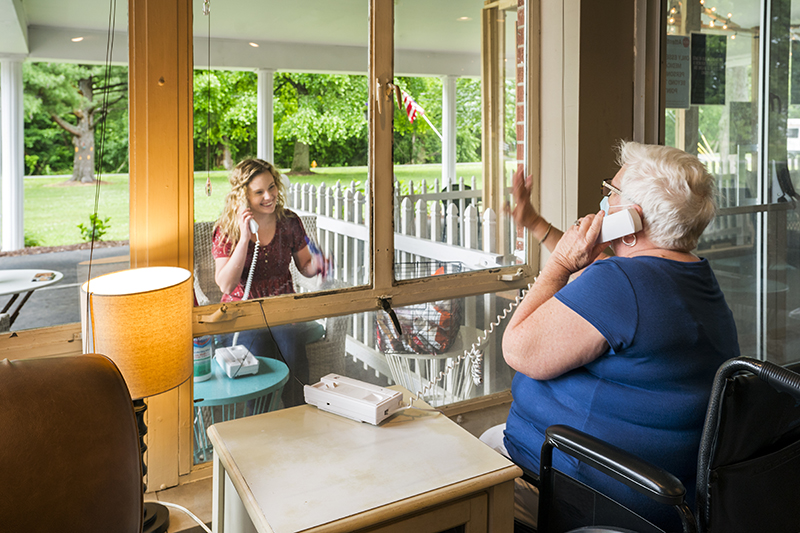Dementia Care and COVID-19: How do we move forward?
Insights from Jennifer Brush, Montessori Education for Ageing and Dementia Programme Director

All of us have been impacted by COVID-19 in many ways, both professionally and personally. The presence of the virus has also created some significant challenges for those living with dementia, especially for those living in long term care communities. In addition, as states work to reopen or partially reopen care communities, the common misunderstanding that individuals living with dementia cannot practice social distancing may result in their continued unnecessary and harmful isolation.
Individuals with dementia have the same needs as everyone else—to feel valued and respected. As dementia progresses in the brain, memories of facts and skills for complex thought fade but feelings such as happiness, love, frustration, and sensing respect remain. “Treatment” for dementia is socialization or elimination of boredom.
Focusing on the 4 basic needs that individuals living with dementia have, here are some best practices to consider during this time of COVID-19 and as we move forward.

Need #1
Allowing safe freedom of movement within the care community.
Everyone should have the opportunity to move about as freely as possible, but changes in the brain caused by dementia may mean that individuals are not able to exercise the judgment and reasoning to do it safely by maintaining a physical distance and wearing a mask. There are a number of reasons why a person with dementia needs to walk about such as the need to engage in a familiar routine, desire to find the bathroom, want of exercise, desire to relive boredom, etc.
Key Messages
Do not try to keep the person seated all day in order to stop the walking about. This may cause anxiety, boredom, incontinence, poor circulation, constipation and overall weakness, thus increasing the risk for falls. Walking helps elders to maintain balance, gross motor skills, and overall healthy functioning of the body’s systems.
Know the person
Leadership should empower all staff to take the time needed to get to know the person and to work with the elder on a routine that keeps the person engaged in activities that meet her or her needs.
Rely on what you know about the person and their past and present habits to try to figure out why the person would like to walk about. Consistent staff assignment is important in order to know the person’s preferences and habits. Once you have identified the cause or suspected cause of the behavior, you can try some solutions. You may have to try several different things before you find the right fit for the person.
Pay attention to when the desire for walking about occurs. It is common for an increase in noise to cause the person to want to get up and leave the area. Activity or noise that used to be easily tolerated or enjoyed such as the TV, radio, staff coming and going at shift change may be overstimulating and uncomfortable.
Ask the physician to help determine if the person is in pain, has a urinary tract infection, or is experiencing side effects of medications.
Create routines that involve movement
Suggest a daily walk. Accompanying the person at a safe distance on a daily walk or enlisting the help of family, friends or volunteers to walk in a safe location such as a courtyard is a simple solution that usually works very well. Build this into the daily routine.
Look for indoor opportunities in well ventilated areas for regular exercise such as an exercise class with a limited number of participants or seated exercises done with a video or internet-based tutorial.
Many people walk about out of boredom or because they are looking for something meaningful to do.
If the person enjoys a certain type of hobby, try setting up a hobby table in their room where they can go and work on a project whenever they like.
Provide cleaning materials such as a broom, dustpan and dusting cloths and invite the person to clean his or her room on a daily basis to encourage movement and purposeful activity.
Try to encourage a healthy sleep routine for the person and avoid napping during the day, particularly due to lack of things to do.
Provide orientation information
Provide information about the time of day. People with dementia often wake throughout the night and becomes confused about time. They may wake up in the middle of the night and get dressed. Having a large digital clock that shows AM and PM may help with the time confusion. Leaving a light on in the bathroom and the hallway may help reduce disorientation at night. Avoiding daytime napping and spending time outdoors will also help encourage normal sleep patterns.
Need #2
Protecting elders against COVID-19.
People living with dementia may find it difficult to understand health information and to remember to follow infection control guidance like washing their hands or wearing masks.
Key Messages
Information
Consider how much information to convey about COVID-19, to avoid inducing anxiety, but enough to convey the importance of following the guidance. Provide simple information that is easy to understand for a person with cognitive impairment in a large print type size that is easy for elders with visual impairment to read. Encourage the elder to talk about any fears or concerns. Listen, reassure, comfort, and try to maintain a positive attitude.
Handwashing
Help elders make frequent handwashing part of the regular routine. Create positive visual reminders such as signs for the bathroom that state, “Clean hands feel good.” Provide warm cloths at each meal for elders to use prior to eating. Provide encouragement and celebrate accomplishments when the elder remembers to wash his or her hands.
Make tissues, garbage cans, and sanitizer visually accessible throughout the community for easy access and a visual reminder to use.
Masks
Help elders make mask wearing part of the regular routine. After the morning routine, suggest placing a mask on one’s face before leaving the room. Provide a hook and reminder note inside the bedrooms, near the door, as a reminder to put on the mask before exiting. Provide staff with a positive statement (mantra) about using masks that each person uses in order to communicate the same positive message.
Remove masks prior to entering elder’s rooms in order to greet the person at a physical distance and allow the person to see the face of the staff member. Wear high contrast large print name tags with the person’s first name only and a large, clear photo of the person. Place name tags on the chest rather than hanging from a lanyard.
Look the person in the eye when communicating with a mask on, use positive gestures, and maintain a calm presence.
Need #3
Keeping families safely connected with their loved ones.
Social and emotional well-being of both family members and elders often is centered around maintaining frequent contact with one another. Because the physical distance required during COVID-19, families are concerned about their loved one’s health status. In addition, both parties can experience anxiety and loneliness from the separation.
Key Messages
Maintaining positive relationships
Assist elders and families with regular visual assess to their loved ones by setting up recurring appointments for video conferencing.
Provide assistance to elders to connect with loved ones routinely by phone.
Assist elders in writing letters, cards, or emails to family and friends. Provide cards, stationary, and stamps and invite the elder to dictate a letter (or email).
Provide family members with directions and a template for creating a memory book for their loved one. Ask family to drop off the book, or volunteer to print and assemble the book if the family emails an electronic file.
Suggest that families create a memory box or care package with a variety of interesting items such as photos, travel memorabilia, trinkets, favorite snacks, magazines, etc. for the elder to enjoy.
Limit family visits to two people at a time. Ask family members to wear masks and use sanitizer or wash hands immediately upon entering the building. Offer name tags to family members to assist the elder in recognition. Provide a variety of visiting space options in areas that can be ventilated by opening windows. Provide chairs for visiting throughout outdoor spaces.
Provide activity ideas for the families to enjoy together such as gardening, listening to music, games, taking walks, filling bird feeders, etc.
Need #4
Purposeful activity.
The need to have purpose in one’s life and to be productive doesn’t end once someone reaches a certain age, moves into a care community, or receives a diagnosis of dementia.
Key Messages
Purposeful and satisfying activities should happen as a normal course of the day on one’s own or in small groups. The community should offer opportunities for new learning, religious practices, meditation, art, music, exercise, etc. on a daily basis that meet individuals’ interests and cognitive level. When elders are free to follow their interests and meet their own needs, they feel fulfilled rather than bored.
Personalized materials can be provided and kept in individuals’ rooms, so they are available at all times. Other materials that are sanitized after use, can made available for work on tables throughout different areas of the community. A variety of kits can be assembled with supplies and given to elders who express interest in the topic.
Engagement for individuals living with dementia
Successful activities are often hands-on and involve movement and sensory stimulation they include:
- Arts and crafts
- Writing poetry
- Telling stories, reading books
- Cleaning one’s room
- Washing and folding one’s clothes
- Religious and spiritual practices
- Wood working
- Gardening
- Personalized music listening
- Small group sing-a-longs
- Yoga
- Mindfulness, relaxation and mediation
- Familiar Cards and board games
- Memory books
- Montessori activities (practical life, sensorial, language, mathematics, and culture)
